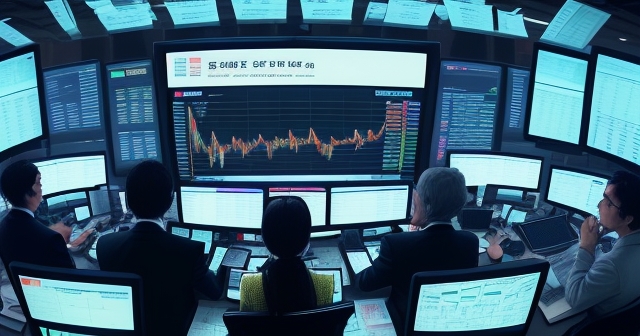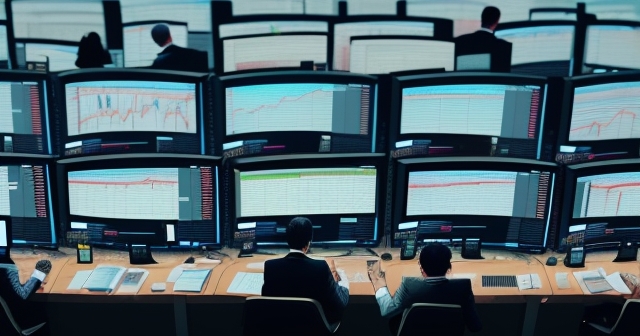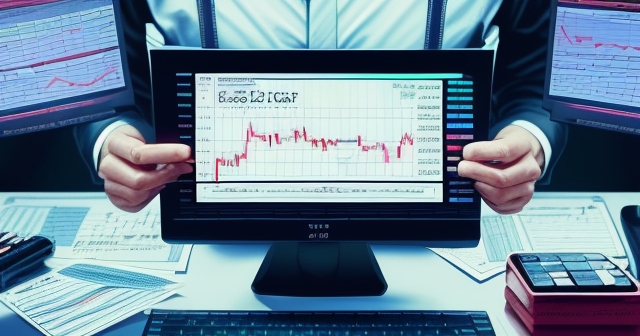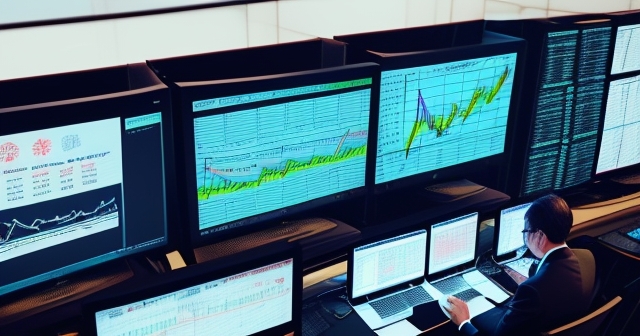Unlocking the World of Currency Futures: A Deep Dive for Aspiring Traders
Have you ever considered participating in the dynamic global financial markets, specifically the realm where currencies are traded? The foreign exchange (FX) market is vast, liquid, and constantly in motion, driven by a complex interplay of economic forces, central bank policies, and geopolitical events. While many are familiar with spot FX trading, there exists a powerful and distinct instrument for engaging with currency movements: currency futures.
Think of currency futures as standardized, legally binding agreements to buy or sell a specific amount of a particular currency at a predetermined price on a future date. Unlike the decentralized nature of the spot FX market, currency futures trade on regulated exchanges like the CME Group (Chicago Mercantile Exchange). This structure offers unique advantages in terms of transparency, liquidity, and centralized clearing, which we will explore in depth.
Our goal today is to demystify currency futures for you, whether you’re a beginner looking for a structured entry point into FX or an experienced trader seeking to expand your toolkit beyond spot markets or CFDs. We will journey through the core mechanics, the drivers of market price, effective analysis techniques, practical trading strategies, and the crucial element of risk management inherent in these leveraged instruments. By the end, you should possess a robust understanding of how to approach trading currency futures with greater confidence and competence.

At its heart, a currency futures contract is an agreement between a buyer (going long) and a seller (going short) to exchange a specific quantity of one currency for another at a fixed price on a future date. This might sound similar to a forward contract, but the key distinction lies in standardization and exchange trading. Futures contracts have predefined specifications:
- Standardized Contract Size: Every contract for a given currency pair and expiration month represents the exact same quantity of the base currency. For instance, a standard CME Euro FX futures contract (symbol: 6E) is for €125,000. This standardization simplifies trading and price discovery compared to the custom nature of forward contracts.
- Specific Expiration Dates: Futures contracts expire on predetermined dates, typically quarterly (March, June, September, December). As expiration approaches, trading activity tends to shift to the next available contract month.
- Settlement Method: Currency futures can be settled either physically or through cash settlement. While some commodity futures might involve physical delivery, most major currency futures contracts are cash-settled. This means that at expiration, instead of exchanging the actual currencies, the difference between the contract price and the current market price is paid or received in cash (usually U.S. dollars). However, the vast majority of futures positions are closed out *before* expiration by taking an offsetting position.
- Price Quotation: Currency futures are quoted in terms of the U.S. dollar equivalent of one unit of the base currency (the first currency in the pair, e.g., EUR in EUR/USD). For example, a quote of 1.1050 for Euro FX futures means €1 is worth $1.1050.
Understanding these mechanics is fundamental. When you buy a currency futures contract, you are agreeing to buy the base currency at the specified price on the expiration date. If the price of the base currency relative to the quote currency rises, the value of your long position increases. Conversely, if you sell (go short) a contract, you profit if the base currency’s value falls.
Unlike spot FX where you trade currency directly, in futures, you are trading a contract representing that currency pair’s future value. This nuance is important when considering rollover costs and expiration cycles.
Understanding Margin and the Power (and Peril) of Leverage
One of the defining characteristics of futures trading is the use of margin. Margin is not a down payment or equity in the asset itself; it’s essentially a good-faith deposit required by the exchange and your broker to cover potential losses on your open positions. Because you’re only required to put up a fraction of the contract’s total notional value, futures trading is inherently leveraged.

Let’s break down the key margin concepts:
- Initial Margin: This is the amount of capital you must have in your account to open a new futures position. It’s set by the exchange (like CME) based on the contract’s volatility and value, and your broker may require slightly more. It’s a percentage of the total contract value, often ranging from 2% to 10% or more depending on the currency pair and market conditions.
- Maintenance Margin: This is a slightly lower amount than the initial margin. Once your position is open, your account equity must remain above this level. If your account equity falls below the maintenance margin level due to unfavorable price movements, you will receive a margin call.
- Margin Call: A margin call is a demand from your broker to deposit additional funds to bring your account equity back up to the initial margin level. If you fail to meet a margin call promptly, your broker has the right to close some or all of your positions to reduce the risk, potentially crystallizing significant losses for you.
The leverage provided by margin can significantly amplify potential profits. For example, controlling a €125,000 contract with an initial margin of, say, $5,000 means you are controlling €125,000 worth of currency exposure with only $5,000 of capital – a leverage ratio of 25:1. A small move in the exchange rate can result in a large percentage gain on your initial margin. However, and this is crucial, leverage also magnifies potential losses by the same factor. A small adverse price movement can quickly erode your margin deposit and lead to substantial losses, potentially exceeding your initial investment.
Understanding margin is not just about capital requirements; it’s the cornerstone of risk management in futures. Knowing the margin levels helps you determine appropriate position sizes based on your account equity and risk tolerance. Ignoring margin requirements or trading with excessive leverage is a common pitfall for new futures traders.
Why Trade Currency Futures? Advantages Over Spot FX and CFDs
While the spot FX market and Contract for Difference (CFD) trading on currencies are popular, trading currency futures on a regulated exchange offers distinct advantages that appeal to many traders and institutions.
Consider these key benefits:
- Regulatory Oversight and Transparency: Currency futures exchanges like CME Group are highly regulated entities. This means trading activity is transparent (prices are visible to all participants), clearing is centralized through a clearing house (reducing counterparty risk), and rules are clearly defined. This contrasts with the over-the-counter (OTC) nature of the spot FX market, where brokers act as market makers and transparency can vary.
- Centralized Clearing: When you trade a futures contract, the clearing house becomes the counterparty to every trade. This eliminates the risk that the party on the other side of your trade (the counterparty) will default on their obligation. In the OTC market, while brokers manage counterparty risk, it is not fully eliminated.
- Liquidity: Major currency futures contracts (like Euro FX, British Pound, Japanese Yen) are incredibly liquid, especially during peak market hours. This high liquidity typically results in tight bid-ask spreads and minimal slippage, even for larger order sizes. While spot FX is also very liquid, exchange-traded futures concentrate liquidity in standardized contracts.
- Standardization: As mentioned, contracts have fixed sizes and expiration dates. This makes comparing prices and executing trades straightforward and predictable. There’s no ambiguity about the terms of the agreement.
- Pricing: Futures prices are derived from supply and demand on the exchange, reflecting a centralized market view. While spot prices and futures prices are closely linked (basis risk is minimal for actively traded near-term contracts), the exchange environment provides a clear, observable price benchmark.
- Potential Margin Efficiency: While this varies, margin requirements for futures contracts are often competitive with or lower than those for some leveraged spot FX or CFD products, allowing for efficient capital deployment.

For institutional traders, hedgers, and serious retail traders, the regulatory framework, transparency, and counterparty risk mitigation offered by futures exchanges are significant drawcards. It provides a structured, secure, and efficient environment for managing foreign exchange exposure and speculating on currency movements.
If you’re looking for a platform to explore regulated trading options, understanding the differences between markets like spot FX, CFDs, and futures is crucial. When choosing a trading platform, Moneta Markets‘s flexibility with platforms like MT4, MT5, Pro Trader, combined with features like high-speed execution and low spreads, can offer a robust environment for potentially trading various instruments, depending on their specific offerings and your regulatory jurisdiction.
The Heartbeat of the Market: Economic Data and News Releases
Currency futures prices are exquisitely sensitive to information, particularly economic data releases and central bank announcements. These events provide insights into the health and direction of an economy, directly influencing expectations about future interest rates, inflation, and growth – all factors that impact a currency’s value relative to others.

Think of these releases as seismic events that can cause rapid and significant price swings. As a trader, understanding *which* data matters and *why* is absolutely essential. Key indicators to monitor include:
- Interest Rate Decisions and Central Bank Meetings: Perhaps the most impactful. Central banks (like the U.S. Federal Reserve, European Central Bank, Bank of England) control monetary policy, primarily through setting interest rates. Higher interest rates generally attract foreign investment seeking better returns, increasing demand for the currency and pushing its value up. Statements accompanying these decisions, outlining future policy intentions (forward guidance), are scrutinized intensely.
- Inflation Data (CPI, PPI): Reports like the Consumer Price Index (CPI) and Producer Price Index (PPI) measure changes in the cost of goods and services. High or rising inflation can pressure central banks to raise interest rates to cool the economy, making the currency more attractive.
- Unemployment Figures: Data on job creation (like the U.S. Non-Farm Payrolls – NFP), unemployment rates, and wage growth provide insights into labor market health. A strong labor market suggests economic growth and potential for higher inflation, influencing central bank policy. NFP, in particular, is known for causing significant volatility in USD futures.
- Gross Domestic Product (GDP): This is the broadest measure of economic activity. Strong GDP growth signals a healthy economy, which is generally positive for the currency.
- Retail Sales: Measures consumer spending, a major component of most developed economies. Strong retail sales indicate robust consumer confidence and economic activity.
- Manufacturing and Services PMIs (Purchasing Managers’ Index): These surveys of business activity provide a forward-looking view of economic health in specific sectors. Numbers above 50 typically indicate expansion.
News trading involves anticipating or reacting quickly to these releases. It requires a deep understanding of how different data points are typically interpreted and their potential impact on monetary policy expectations. The period immediately surrounding a major news release often sees increased volatility, wider bid-ask spreads, and potential for slippage, which must be factored into your trading plan.
Beyond scheduled economic data, unforeseen geopolitical events, elections, and significant world news can also trigger sharp moves in currency futures as traders reassess risk and economic stability.
Central Banks: The Architects of Currency Valuation
Building upon the previous point, it’s impossible to overstate the influence of central banks on currency futures markets. These institutions are the stewards of their national economies, tasked with maintaining price stability (controlling inflation) and often promoting full employment and stable economic growth. Their primary tool is monetary policy, with interest rates being the most direct lever.

When a central bank signals a willingness to raise interest rates, it makes holding that currency more attractive to investors seeking yield. This increased demand, everything else being equal, will push the currency’s value up on the global markets, reflected in higher prices for its corresponding futures contracts. Conversely, cutting rates or engaging in quantitative easing (injecting liquidity) tends to devalue a currency.
Traders pay close attention not just to the rate decision itself, but also to the central bank’s accompanying statement and press conference. This is where forward guidance is provided – hints about future policy intentions. If a central bank sounds “hawkish” (inclined to raise rates), the currency may strengthen. If it sounds “dovish” (inclined to lower rates or be more accommodative), the currency may weaken.
Understanding the current stance and future trajectory of monetary policy for the major central banks (Fed, ECB, BoE, BoJ, etc.) is a cornerstone of fundamental analysis in currency futures. Monetary policy divergence – when central banks in different countries are moving in different directions with their policies – is a particularly powerful driver of long-term trends in currency pairs.
Keeping a detailed economic calendar and understanding the consensus expectations for key data points and central bank actions is a vital part of preparing to trade currency futures. Surprises relative to these expectations are often what trigger the biggest market reactions.
Applying Technical Analysis to FX Futures Markets
While fundamental analysis focuses on the *why* behind currency movements (economic health, policy), technical analysis focuses on the *how* and *when* by studying price charts and trading volume. Technical analysis assumes that all known information is already reflected in the price, and that price movements often follow patterns and trends due to market psychology.
Technical analysis principles apply universally across financial markets, including currency futures. Here’s how you can use it:
- Chart Patterns: Identifying patterns formed by price action on the chart (e.g., head and shoulders, double tops/bottoms, triangles, flags, pennants) can provide potential signals for trend reversals or continuation.
- Trend Lines and Channels: Drawing lines on the chart to identify the direction and strength of a trend. Trading with the prevailing trend is often favored by technical analysts.
- Support and Resistance Levels: These are price levels where buying or selling pressure is historically strong, often causing prices to pause or reverse. Identifying these levels helps in determining potential entry and exit points.
- Moving Averages: These indicators smooth out price data to show the average price over a specific period. Crossovers of different moving averages or price crossing a moving average can signal potential trend changes. Common moving averages include the 50-day, 100-day, and 200-day simple or exponential moving averages.
- Technical Indicators: Various mathematical calculations based on price and volume data can provide trading signals. Popular indicators include the Relative Strength Index (RSI) to measure momentum, the MACD (Moving Average Convergence Divergence) to show trend strength and direction, and Bollinger Bands to measure volatility.
When applying technical analysis to futures, it’s often beneficial to look at charts of the nearest-term contract month, as this is typically the most liquid. However, you might also look at continuous futures charts (which stitch together data from different contract months) to see longer-term trends without gaps caused by contract rollovers. Combining technical signals with fundamental analysis can often lead to more robust trading decisions. For example, a bullish technical setup might be more convincing if it’s supported by positive economic news from that currency’s issuing country.
Reading the Market’s Pulse: Volume and Open Interest
Two metrics unique and crucial to exchange-traded futures markets are Volume and Open Interest. These provide valuable insights into market activity, participation, and potential trend strength that aren’t directly available in the same standardized way in the spot FX market.
- Volume: This represents the total number of contracts traded during a specific period (e.g., a day). High volume indicates strong trading activity and market participation. When a price move occurs on high volume, it suggests conviction behind that move. If price is moving up but volume is declining, it might indicate weakening buying interest and signal a potential trend reversal.
- Open Interest: This is the total number of outstanding futures contracts that have *not* yet been settled or offset. It represents the total number of positions (long and short) currently open in the market. Rising Open Interest suggests new money is entering the market, increasing participation. Declining Open Interest means contracts are being closed out, indicating money is leaving the market.
Interpreting Volume and Open Interest in conjunction with price action is a key skill for futures traders:
| Market Condition | Signal Interpretation |
|---|---|
| Rising Price + Rising Volume + Rising Open Interest | Strong bullish signal indicating new buyers are entering the market. |
| Falling Price + Rising Volume + Rising Open Interest | Strong bearish signal indicating new sellers are entering the market. |
| Rising Price + Falling Volume + Falling Open Interest | Potentially weak bullish signal or warning sign of a trend reversal. |
| Falling Price + Falling Volume + Falling Open Interest | Could indicate sellers are closing positions, suggesting the downtrend may be ending. |
Volume and Open Interest data are typically released after the trading day closes. While not real-time trading signals, they provide essential context for the prior day’s price action and help gauge the health and potential longevity of trends.
Executing Your Strategy: Speculation and Hedging
There are two primary reasons why participants trade currency futures: speculation and hedging.
- Speculation: This involves taking on currency exposure with the goal of profiting from anticipated price movements. A speculator believes a currency will strengthen or weaken relative to another and uses futures to capitalize on that expectation. For instance, if you believe the Euro will strengthen against the U.S. dollar, you would buy (go long) Euro FX futures contracts. If the price rises, you profit. If it falls, you incur a loss. Speculation is the core activity for many retail and professional traders aiming for trading profits.
- Hedging: This is undertaken by individuals or businesses to reduce their exposure to adverse currency rate fluctuations. A hedger already has a risk exposure in the spot market and uses futures to offset that risk. For example, a U.S. company that expects to receive a payment of €1,000,000 in three months faces the risk that the Euro’s value might fall against the USD by the time they receive the money. To hedge this risk, they could sell (go short) Euro FX futures contracts equivalent to €1,000,000 for the appropriate expiration month. If the Euro depreciates, the loss on their expected payment is offset by a profit on their futures position. If the Euro appreciates, they gain on their payment but lose on their futures position, effectively locking in an exchange rate close to the current futures price.
While many retail traders focus on speculation, understanding the hedging aspect is important because it contributes significantly to market liquidity and can influence price dynamics, especially in less liquid contract months. The interplay between hedgers and speculators is what makes the futures market function.
As a speculator, your task is to develop a systematic approach – a trading strategy – to identify opportunities, manage risk, and execute trades based on your analysis. This is what we’ll discuss next.
Navigating Volatility: Effective Trading Strategies for FX Futures
Trading currency futures requires more than just understanding the mechanics; it demands a well-defined strategy. Given the inherent leverage and potential for significant price swings, a haphazard approach is unlikely to yield consistent results. Your strategy should align with your risk tolerance, capital, and time commitment.
Here are a few common strategic approaches used in currency futures:
- News-Based Trading (Event Trading): This involves positioning yourself ahead of or reacting quickly to major economic data releases or central bank announcements. The goal is to capture the sharp moves that often occur as the market processes new information. This strategy requires speed, precise execution, and a deep understanding of fundamental drivers. However, it also involves high risk due to potential “whipsaws” and volatility.
- Trend Following: This strategy aims to identify and ride established trends in currency pairs. Traders using this approach often use technical indicators like moving averages, trend lines, and momentum oscillators to spot the beginning and end of trends. The belief is that a trend, once established, is likely to continue for a period. This can be applied to various timeframes, from short-term to long-term trends.
- Range Trading: In periods where a currency pair is trading within a defined price range (bounded by support and resistance), traders may attempt to buy near the support level and sell near the resistance level. This strategy relies on the expectation that the price will bounce off these levels rather than breaking through.
- Carry Trade Strategy: This involves borrowing a currency with a low interest rate and investing in a currency with a high interest rate to profit from the interest rate differential. While traditionally done in the spot market with swaps, futures traders can replicate elements of this strategy, although the profit comes through the pricing difference between contract months rather than explicit daily swaps (this is reflected in the futures curve). This strategy is sensitive to interest rate expectations and can unwind rapidly if volatility increases.
- Breakout Trading: This involves entering a position when the price breaks convincingly above a resistance level (for a long trade) or below a support level (for a short trade). The idea is that a breakout signals the start of a new trend. This is often used in conjunction with news trading, as major news can trigger breakouts.
Regardless of the specific strategy, successful implementation requires discipline, patience, and strict adherence to your trading plan. This includes defining your entry criteria, exit criteria (both profit targets and stop-losses), and position sizing *before* entering the trade.
Mastering Risk Management in Leveraged Markets
We’ve touched upon margin and leverage, but risk management deserves its own dedicated focus because it is arguably the single most important factor for long-term survival and success in futures trading. Leverage amplifies both gains and losses, making robust risk controls absolutely critical.
Here are the pillars of effective risk management in currency futures:
- Understand Margin Requirements: Always know the initial and maintenance margin for the contracts you trade. Ensure your account has sufficient capital well above the maintenance margin to withstand normal market fluctuations and avoid unnecessary margin calls.
- Position Sizing: This is fundamental. Never allocate too much of your trading capital to a single trade. A common rule of thumb is to risk only a small percentage (e.g., 1-2%) of your total trading capital on any given trade. This means calculating the potential loss if your stop-loss is hit and adjusting your position size accordingly. Given the contract size of currency futures, this requires careful calculation.
- Use Stop-Loss Orders: A stop-loss order is an instruction to your broker to close your position automatically if the price moves against you to a specified level. This limits your maximum potential loss on a trade. While they don’t guarantee execution at the exact price in fast-moving markets (slippage can occur), they are an essential tool for managing downside risk.
- Set Profit Targets: Just as important as limiting losses is having a plan for taking profits. Define your target price before entering a trade and consider using limit orders to close your position automatically when the target is reached.
- Don’t Over-Leverage: While margin enables leverage, don’t feel compelled to use the maximum possible leverage. Trading with higher leverage increases the risk of being stopped out by minor price retracements. Be conservative, especially as a beginner.
- Monitor Your Positions: Keep track of your open positions and account equity, especially during volatile periods or around major news events.
- Emotional Control: Fear and greed are powerful emotions that can derail even the best trading plans. Stick to your predetermined strategy and risk management rules, avoiding impulsive decisions based on short-term price swings.
Remember, the primary goal of risk management is capital preservation. If you protect your capital, you stay in the game and have the opportunity to capitalize on future trading opportunities. Ignoring risk management in a leveraged environment is like driving a race car without brakes.
The choice of a trading platform also plays a role in risk management. Features like reliable execution, the ability to place various order types (including stop-losses and limit orders), and clear margin level reporting are vital. If you’re seeking a brokerage that supports diverse trading tools and prioritizes execution, Moneta Markets is worth considering. Offering popular platforms like MT4, MT5, and Pro Trader, it aims to provide traders with the technical stability and execution speed needed for effective risk control in volatile markets.
Choosing the Right Platform and Resources
To trade currency futures, you need a brokerage account that provides access to the relevant exchanges, primarily the CME Group for major currency pairs. When selecting a futures broker, consider several factors:
- Exchange Access: Does the broker offer trading on the specific currency futures contracts you are interested in?
- Trading Platform: Is the trading platform reliable, user-friendly, and equipped with the charting tools, indicators, and order types you need? Can you easily monitor margin levels and account equity?
- Commissions and Fees: Compare the commission structure (per contract) and any other fees (e.g., platform fees, data fees, inactivity fees).
- Margin Rates: While initial and maintenance margins are set by the exchange, brokers may require higher margins. Compare these rates.
- Customer Support: Is reliable and responsive customer support available, especially during trading hours?
- Regulation and Security: Is the broker well-regulated? How are client funds handled (e.g., segregated accounts)?
- Research and Education: Does the broker provide useful research, analysis tools, or educational resources?
Beyond a broker, continuous learning is essential. Stay informed about global economic news, central bank policies, and market analysis. Utilize the wealth of resources available online, through financial news outlets, and via broker-provided research.
For those exploring their options for trading platforms and seeking a broker that offers a range of financial instruments and strong regulatory oversight, Moneta Markets stands out. Licensed by reputable authorities like FSCA, ASIC, and FSA, they offer segregated client funds and provide resources like free VPS and 24/7 support, which can be valuable assets for traders navigating different markets, including those potentially interested in FX instruments similar to futures.
Conclusion: Navigating the Path to Profitable Currency Futures Trading
Trading currency futures offers a structured, transparent, and leveraged way to participate in the global foreign exchange market. They serve as powerful tools for both speculating on currency movements and effectively hedging against foreign exchange risk. The regulated environment of futures exchanges like the CME Group provides distinct advantages over some other FX markets, including centralized clearing and enhanced transparency.
However, the leverage inherent in futures trading, while offering potential for amplified returns, also magnifies risk. Success in this arena demands a deep understanding of contract mechanics, diligent fundamental analysis to interpret economic data and central bank actions, the ability to apply technical analysis to anticipate price movements, and, most importantly, rigorous risk management practices to protect your capital.
As you embark on or continue your trading journey, remember that continuous learning, disciplined strategy execution, and a focus on managing risk are your most valuable assets. By approaching currency futures trading with knowledge, preparation, and caution, you increase your probability of navigating these exciting and potentially rewarding markets successfully. We trust this comprehensive guide has equipped you with foundational insights to pursue your trading goals with greater confidence.
how to trade currency futuresFAQ
Q:What are currency futures?
A:Currency futures are standardized legal agreements to buy or sell a specific amount of a currency at a predetermined price on a future date on regulated exchanges.
Q:What are the advantages of trading currency futures over spot FX?
A:Currency futures offer advantages such as regulatory oversight, centralized clearing, enhanced liquidity, and standardized contract specifications, contributing to greater transparency and reduced counterparty risk.
Q:How does margin work in currency futures trading?
A:Margin is a good-faith deposit required to enter futures trades, acting as collateral against potential losses. The initial margin is needed to open a position, while maintenance margin ensures sufficient equity remains in the account during trading.
